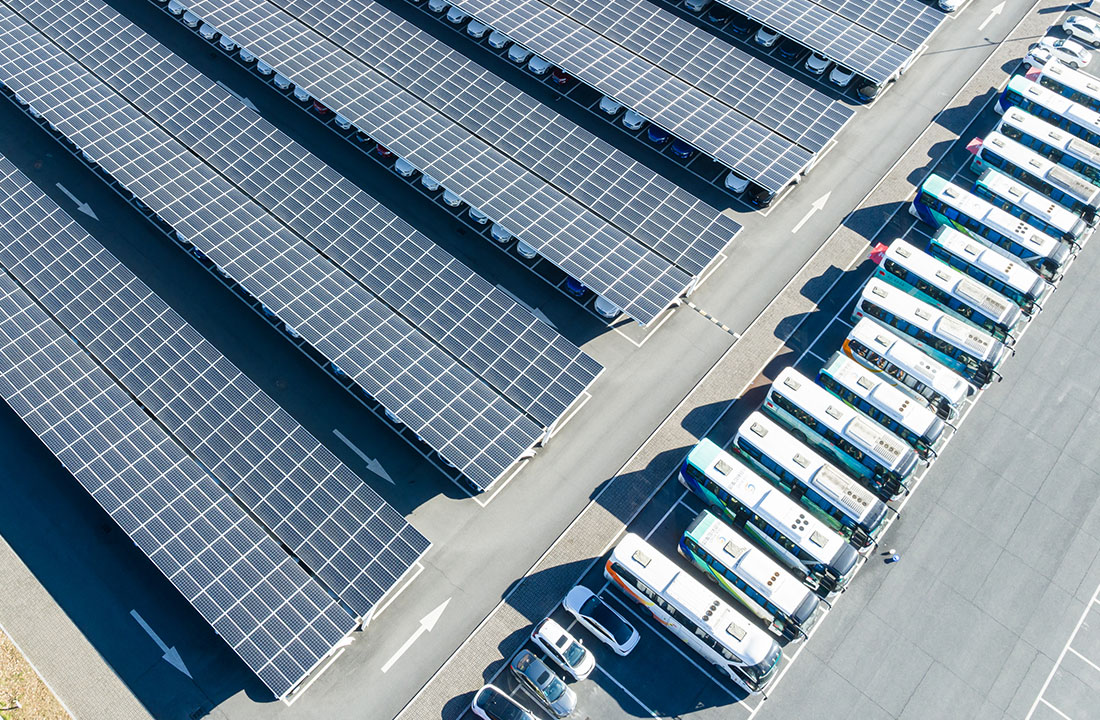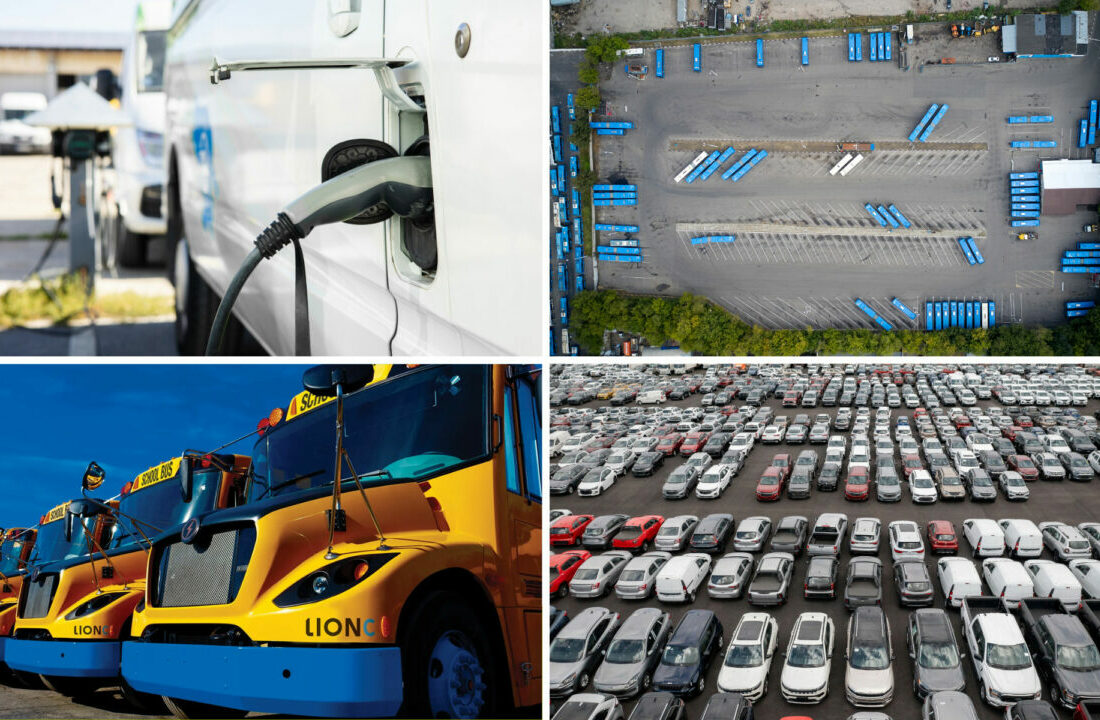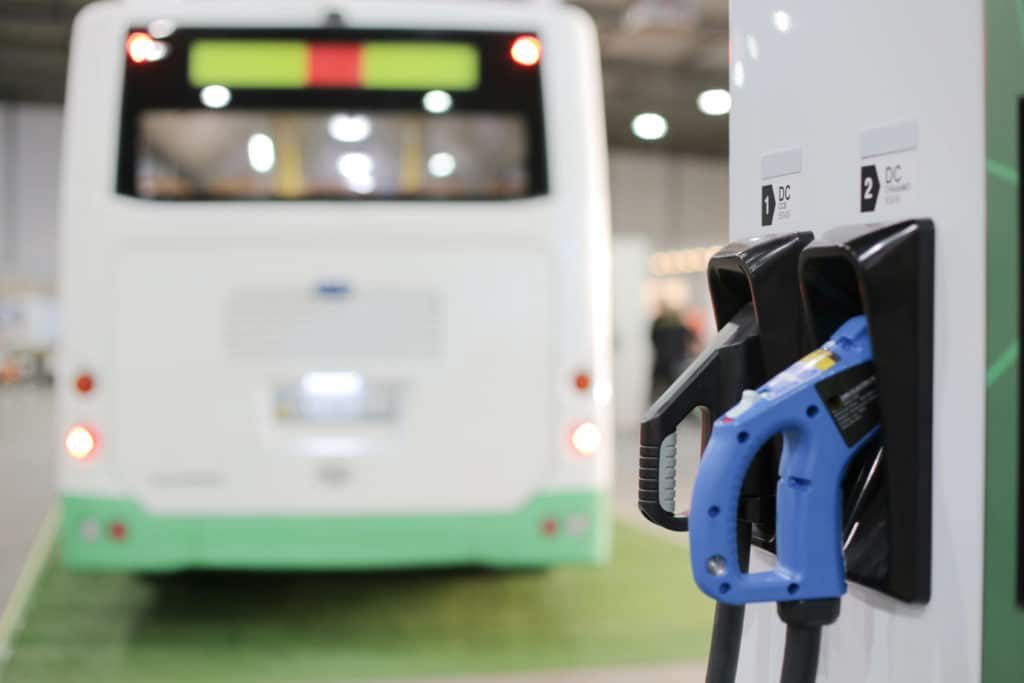
The transition to electric vehicles is a significant and complex undertaking for any commercial fleet. Among the various challenges that arise, one of the most critical and often confusing is the selection of the right electric vehicle fleet charging infrastructure. This choice is fundamental to the smooth operation of your fleet and directly impacts the economic feasibility of your transition to electric. Numerous factors contribute to this complexity, such as fleet size and type, operational requirements, and the variety of technologies currently on offer.
In recognition of these complexities, we’ve crafted an episode titled “Selecting Electric Vehicle Fleet Charging Infrastructure,” where experts help break down these complex issues. They offer insights into the role of fleet analysis and modeling for electric vehicle fleet charging, and emphasize the need to consider factors such as the time available for charging and space constraints. They touch on identifying the energy needs of your electric vehicle fleet, and the importance of taking standards into consideration such as OCPP protocol for universal charging. Listen in to learn more about choosing the right electric vehicle fleet charging infrastructure to meet the needs of different fleet operations.
This episode features the following experts and industry thought leaders:
Dan: The BetterFleet Academy provides fleet operators with everything they need to know about moving to an electric and hydrogen fleet. We look at issues in detail, helped by thought leaders and our own staff here at Evenergi and BetterFleet.
Buying charging infrastructure for your fleet can be a complex process; we generally fight it is quite iterative. For example, you’ve got to think about the cost, the spatial impact of the charger, the speed of the charger, the standard compliance, and even things like what comes in the package of the charger that you procured. So with all this complexity, we asked the experts: “What do you need to consider when buying charging infrastructure for your fleet?
Analy: The modeling will get us started and give us an idea of what’s the energy requirement at the vehicle level. You really have to understand the whole picture before making a decision regarding the technology. For larger fleets I think it’s very critical to have an understanding of how vehicles move throughout the yard. I think Evenergi has done a lot of efforts with the depot emulation and it’s something that we constantly are recommending to clients as well that have larger fleets. When you have up to 300 vehicles there is movement all through the day and you have to ensure that those vehicles are going to have enough time to charge.
Alix: The duty cycle and the power requirements do play a part in our selection process for the chargers. We need to understand how long we have for the chargers to, how long are the buses back into the garage for it to charge overnight, whether or not it needs to be a plug-in charger or whether or not it needs to be a pantograph charger.
Alan: We have to look at this as one big system right because that’s what it is, it’s a system of buses, and we need to look at how much energy is going to be required to charge the entire fleet in any 24-hour period. What is the block schedule, when are buses leaving in the morning usually and coming back either midday or in the afternoon or the evening? And when can that, when is that bus able to charge? And then how much energy is required to replace on that bus based on its duty cycle and the efficiency that it’s going to have? And once we know that then you can and then you look at that for the entire system of buses.
Anna: One of the key requirements is that the chargers must comply with the open charge point protocol OCPP 1.6 J. This is really important to us because this means that chargers can be networked and can be monitored and managed online. This allows us to implement load management protocols and to be in full control of our energy consumption and energy costs.
Analy: The site plan is critical also because it allows us to see if there is any space constraints. Sometimes plug-ins can be accommodated in the front of the bus, but not necessarily like the canopies to hold the pantograph infrastructure, might not have enough space in between. So having a concept design is also very critical to understand the difference between what technology can be applied.
Neil: We all know the pantograph charger is a lot more expensive than plug-in. The plug-in charger is the best, we believe it’s best and easiest solution for the EV vehicle right now, because if we’re particularly talking about bus, the plug-in charger is more cost efficient.
Max: An important consideration when selecting DC chargers is their form factor. So there are three key typologies in form factor out there in the market today: decentralized or standalone chargers which look a lot like your typical fuel bowser, then at the other end of the spectrum you have fully centralized systems, so large containers housing all of the power electronics and then satellites or dispensers in the yard, and then in between that you have a similar solution to that but the charging centers are a little bit smaller than the centralized system and then each charging center can have one up to eight maybe more dispensers connected to it.
So at a high level to explain why this is the case, it’s driven by the fact that for every DC charging application you need to convert power from the grid from AC to DC. Now, the electronics required to do that can get very large and so it depends where they are housed. So in your standalone kind of fuel bowser solution the power electronics live within the charger, and so the charger itself can become quite big, and then if you end up having to fit these into a very tight bus depot with very narrow parking lanes, it can have a very big spatial impact. But if you’ve got a passenger fleet, the vehicles are parking rear-in, and you’ve got a nice grass verge behind them, that might not be an issue for you.
Centralized systems use much smaller satellites or dispensers, so there’s less impact in the parking area where you have to fit them into like a bus depot, but you have to find space for all your central charging equipment, so you need to fit this big charging container somewhere. So it’s really about finding the right fit for purpose solution for your site, and your Fleet based on the spatial constraints, energy requirements, and other considerations.
When comparing different charger typologies, be aware of what comes with the charger and what doesn’t. Bowser style freestanding chargers will need a low voltage supply either from an EV distribution board or a main switchboard. Now if you think about all the chargers in your yard and having to supply each and every one of those, the switchboard supplying them will need a circuit breaker for each and can become very large and expensive.
For the other two solutions while you’ll still need cabling from your charging centers out to your pedestals or dispensers, the charging centers themselves have all the distribution equipment that you need integrated in them. Sometimes they’ll even have high voltage equipment and Transformers and other ancillary equipment that you’d otherwise need to procure. So when comparing quotes from suppliers, be sure to look at the whole of system cost, not just what’s on paper.
Dan: So as you can see, there’s lots of different challenges both Technical and Commercial you need to think about when implementing charging infrastructure for your Fleet. We’ll Deep dive into some of these in the future, for example what are the different ways that OCPP has been implemented by different charger manufacturers and why does that matter? How do you pick the right ratios of vehicles to chargers and what are the different options around spatial designs for depots? We hope you’ve enjoyed this episode, and if you have, please share it with your network and we hope to bring you more value in the future and assist the decarbonization of fleets.

Get an introduction to charging standards for EV fleets in this episode, with experts Brent Hartman, Director of Fuels and Transportation Standards at the Canadian Standards Alliance, and Ned Funnell, Charging Solution Architect with Electrada.

Get an introduction to microgrids for EV fleets in this episode, with experts Mushtaq Ahmad, Associate Vice President at AECOM, and Max Zaporoshenko, Head of Customer Success at EVenergi.

Learn about the best practices, challenges, and advice for workforce development when transitioning to zero emission vehicles in this episode with expert James Hall.

Look into the future of zero emission vehicle fleets with experts including Paul Comfort, Alix Butler, Pamela MacDougall, Neil Gladstone, Anna Martinis, Ian Foster, and Daniel Hilson.

Exploring what fleets with electric vehicles can do to increase resiliency and plan for emergency scenarios.

Incidents of electric bus fires over the past few years have brought questions to light.

Looking at trade-offs such as cost, charging infrastructure requirements and range.